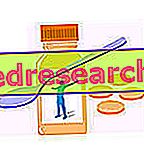Depression and neurotransmitters
Depression is a serious psychiatric condition that involves the mood, mind and body of patients. During the depressive state, people feel hopeless and feel an overwhelming sense of despair, uselessness and incapacity.

The neurotransmitters are synthesized within the presynaptic nerve endings, stored in vesicles and - subsequently - released in the synaptic wall (the space present between the presynaptic and postsynaptic nerve endings) in response to certain stimuli.
Once released from the deposits, the monoamines interact with their receptors - both presynaptic and postsynaptic - so as to perform their biological activity.
After performing their function, monoamines bind to receptors responsible for their reuptake (SERT for serotonin reuptake and NET for noradrenaline reuptake) and are reported within the presynaptic nerve termination.
Tricyclic antidepressants can interfere with the monoamine reuptake mechanism. In this way they increase the transmission and allow the improvement of the depressive pathology.
History
Before 1950 there were no real antidepressant drugs, or, at least, not in the way we understand them today. The only therapies used in the treatment of depression were based on the use of amphetamine stimulants or electroconvulsive therapy . However, the use of amphetamine drugs was often ineffective and the only result obtained was an increase in patient activity and energy. Electroconvulsive therapy, on the other hand - although effective - terrified patients because it caused pain.
The first antidepressants were discovered in the late 1950s. As with many of the discoveries that changed human life, the synthesis of antidepressants also did not come from design, but from chance.
The forefather of tricyclic antidepressants - imipramine - was discovered by the Swiss psychiatrist Ronald Kuhn while he was looking for new compounds similar to chlorpromazine for the treatment of schizophrenia.
Between 1960 and 1980, TCAs became the main therapeutic agents used in the treatment of depression.
However, TCAs - in addition to inhibiting monoamine reuptake - are also able to act on many other systems in the body, causing a wide range of side effects.
With the discovery of more selective antidepressant drugs - such as selective serotonin reuptake inhibitors (SSRIs), selective norepinephrine reuptake inhibitors (SNRIs) and non-selective inhibitors of noradrenaline and serotonin reuptake (NSRI) - TCAs were not most used as first choice drugs for the treatment of depression.
Today, TCAs play a minor role in psychiatry but still retain some importance.
Indications
For what it uses
Tricyclic antidepressants can be used in the treatment of various depressive pathological states which include:
- States of major depression;
- dysthymia;
- Social phobia;
- Panic attacks;
- Attention deficit disorder with or without hyperactivity;
- Bulimia;
- Narcolepsy;
- Enuresis (involuntary emission of urine) in children;
- Migraine and other chronic pain conditions;
- Obsessive-compulsive disorders.
Furthermore, TCAs can be used to treat some symptoms (nightmares) of post-traumatic stress syndrome. For many of these therapeutic indications, however, more recent, effective and safe pharmacological alternatives exist.
Action mechanism
Tricyclic antidepressants are able to inhibit the reuptake of serotonin and noradrenaline. In particular, they are able to bind to the transporters responsible for the reuptake of these monoamines (SERT and NET), thus inducing conformational changes in their structure. These modifications reduce the affinity of the monoamine for the corresponding carrier (transporter) thus preventing its re-uptake.
In this way, the neurotransmitters remain in the synaptic wall for a prolonged period; this causes an increase in serotoninergic and noradrenergic signals, allowing an improvement in depressive pathology.
TCAs do not interfere with dopamine reuptake.

Side effects
As mentioned above, the TCA - in addition to the monoamine reuptake - also act on other systems of the body and behave like "five drugs contained in one". Because of this characteristic, tricyclic antidepressants are also called " dirty drugs ".
The side effects are mainly due to these secondary actions:
- Muscarinic receptor blockade (anticholinergic action);
- Blockade of α 1 -adrenergic receptors;
- Blockade of H 1 receptors (antihistamine action);
- Blockade of sodium channels at cardiac level and at the level of the central nervous system.
The blocking of all these systems by tricyclic antidepressants causes a long series of side effects, the main ones being:
- Dry mouth;
- Constipation;
- Poor urinary flow, difficulty in emptying the bladder and painful urination;
- Sexual dysfunctions;
- Blurred vision;
- Dizziness;
- Daytime sleepiness;
- Increased blood pressure and heart rate;
- Slowing or blocking of ventricular conduction;
- Ventricular arrhythmias;
- Convulsions.
Types of tricyclic antidepressants

Imipramine - Chemical Structure
Tricyclic antidepressants are commonly divided - based on their chemical structure - into five different groups:
- Derivatives with a dihydrobenzazepine ring, such as imipramine and desipramine ;
- Derivatives with dibenzocicloeptenico ring, such as amitriptyline and nortriptyline ;
- Derivatives with dibenzoxazepine ring, such as doxepin ;
- Derivatives with dibenzocycloeptatriene ring, such as protriptyline ;
- Tetracyclic compounds, such as maprotiline .



